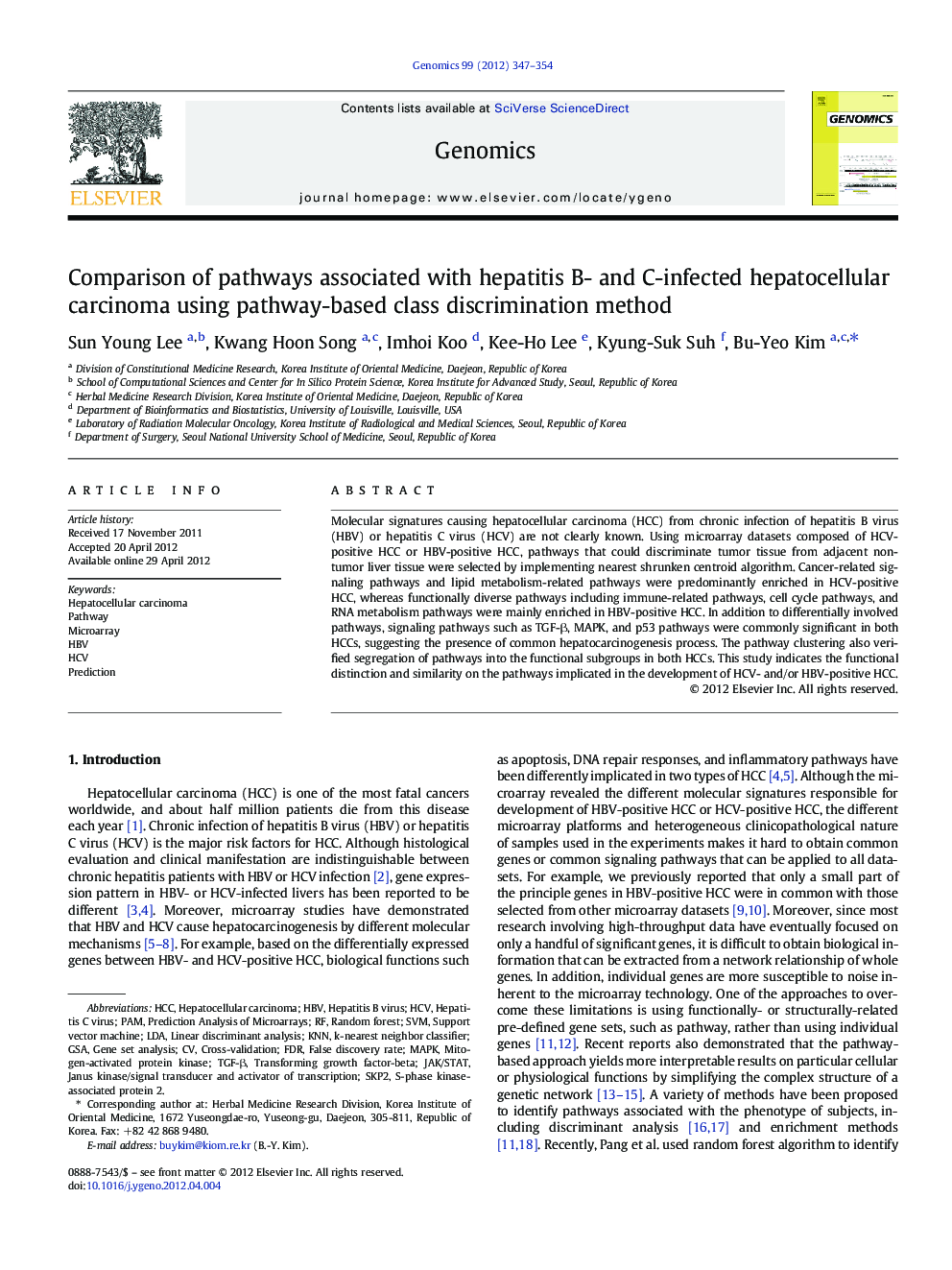| Article ID | Journal | Published Year | Pages | File Type |
|---|---|---|---|---|
| 2820926 | Genomics | 2012 | 8 Pages |
Molecular signatures causing hepatocellular carcinoma (HCC) from chronic infection of hepatitis B virus (HBV) or hepatitis C virus (HCV) are not clearly known. Using microarray datasets composed of HCV-positive HCC or HBV-positive HCC, pathways that could discriminate tumor tissue from adjacent non-tumor liver tissue were selected by implementing nearest shrunken centroid algorithm. Cancer-related signaling pathways and lipid metabolism-related pathways were predominantly enriched in HCV-positive HCC, whereas functionally diverse pathways including immune-related pathways, cell cycle pathways, and RNA metabolism pathways were mainly enriched in HBV-positive HCC. In addition to differentially involved pathways, signaling pathways such as TGF-β, MAPK, and p53 pathways were commonly significant in both HCCs, suggesting the presence of common hepatocarcinogenesis process. The pathway clustering also verified segregation of pathways into the functional subgroups in both HCCs. This study indicates the functional distinction and similarity on the pathways implicated in the development of HCV- and/or HBV-positive HCC.
► We identified pathways involved in the development of hepatocellular carcinoma (HCC). ► We examined microarray data composed of HCV- or HBV-positive HCC. ► Cancer-related signaling pathways were involved in HCV-positive HCC. ► Diverse pathways including immune and cell cycle were involved in HBV-positive HCC. ► TGF-β, MAPK, and p53 pathways were commonly significant in both HCCs.
